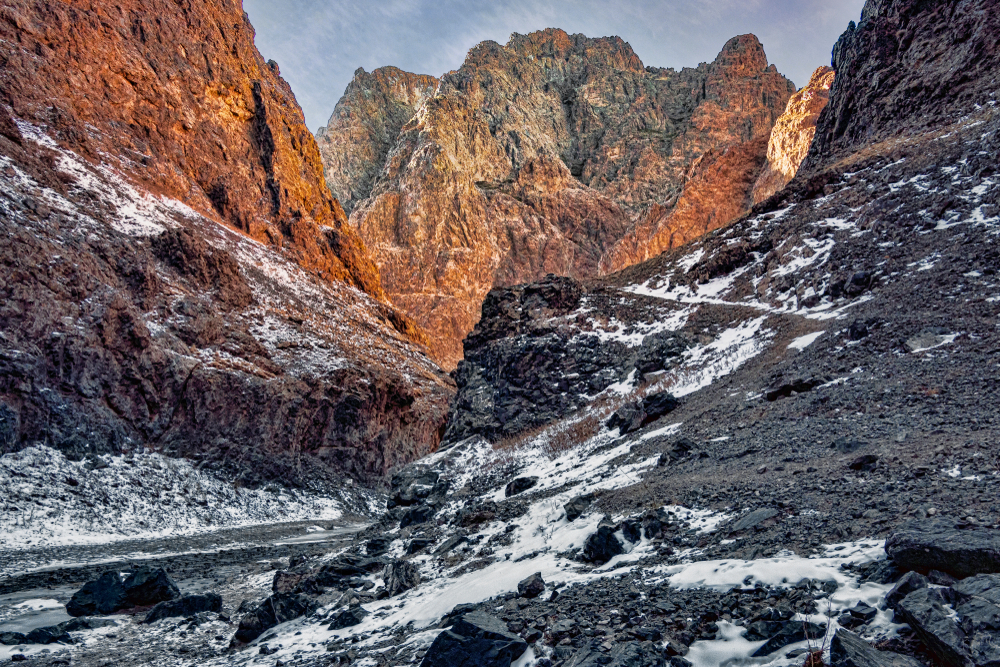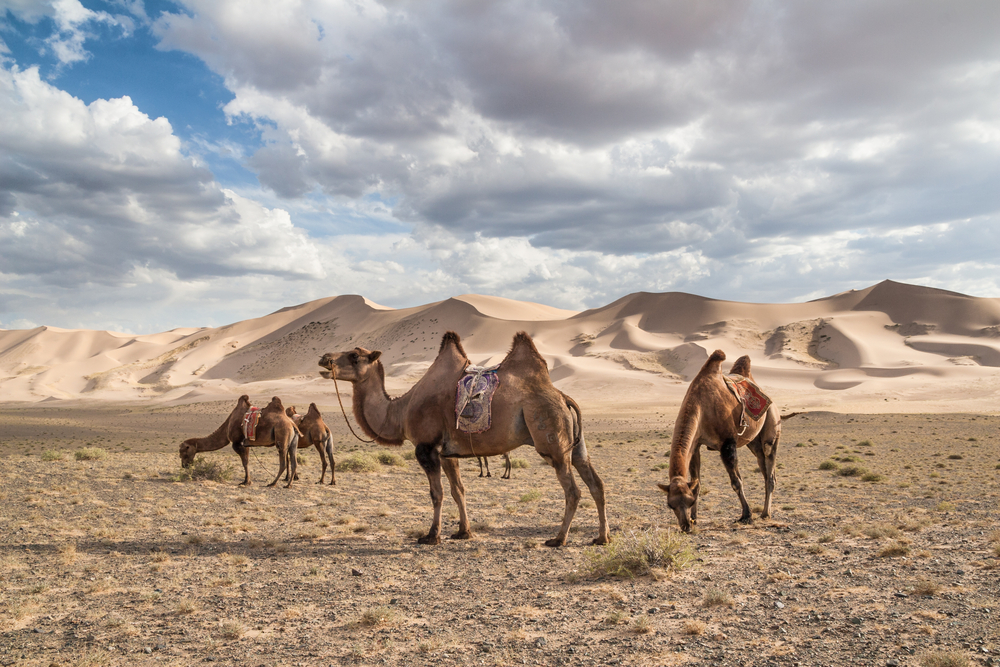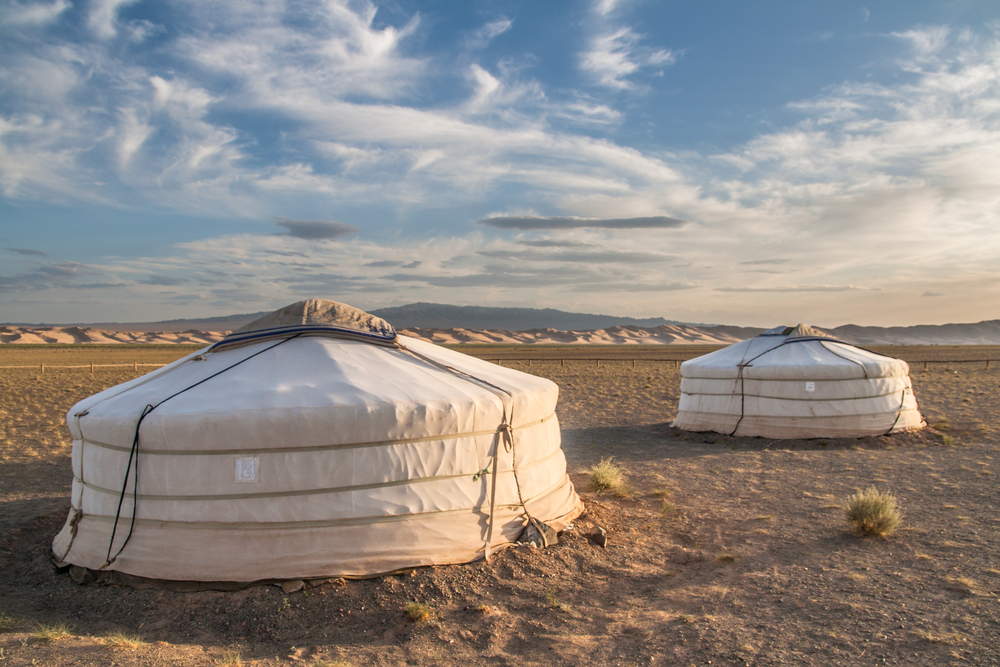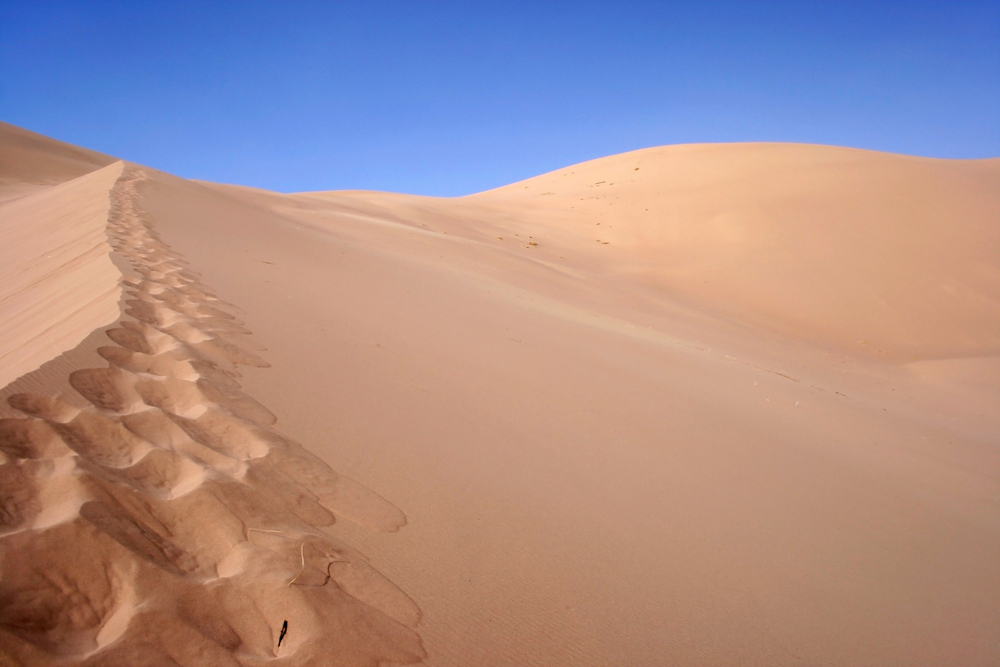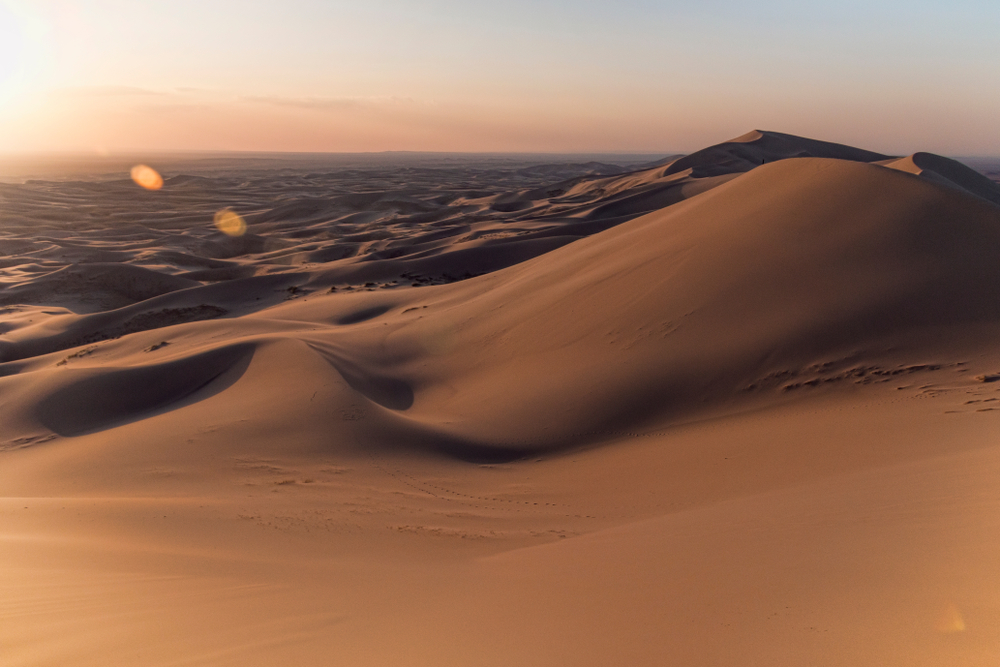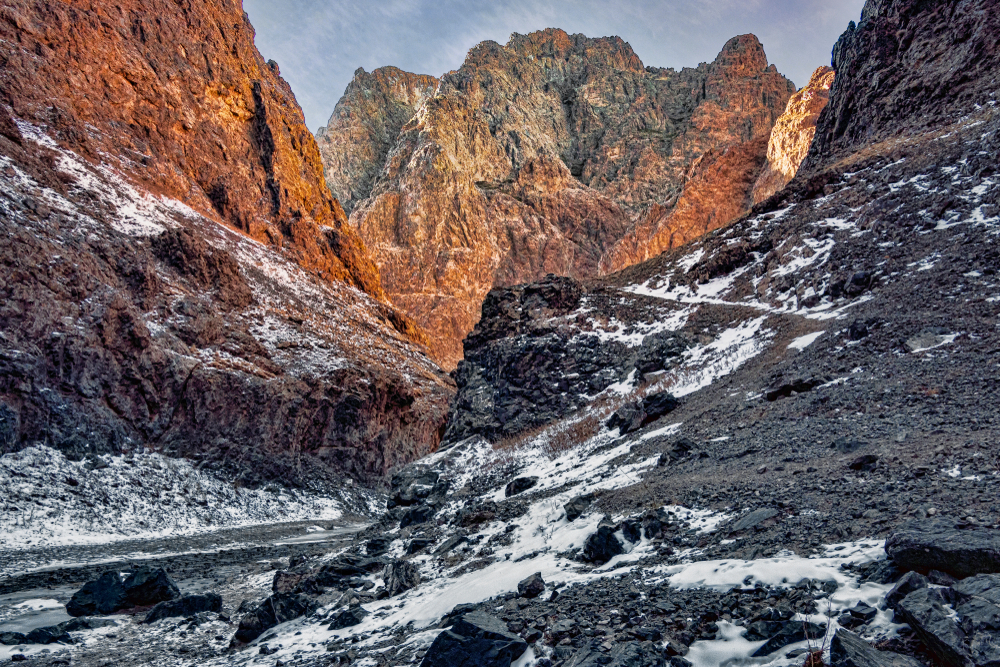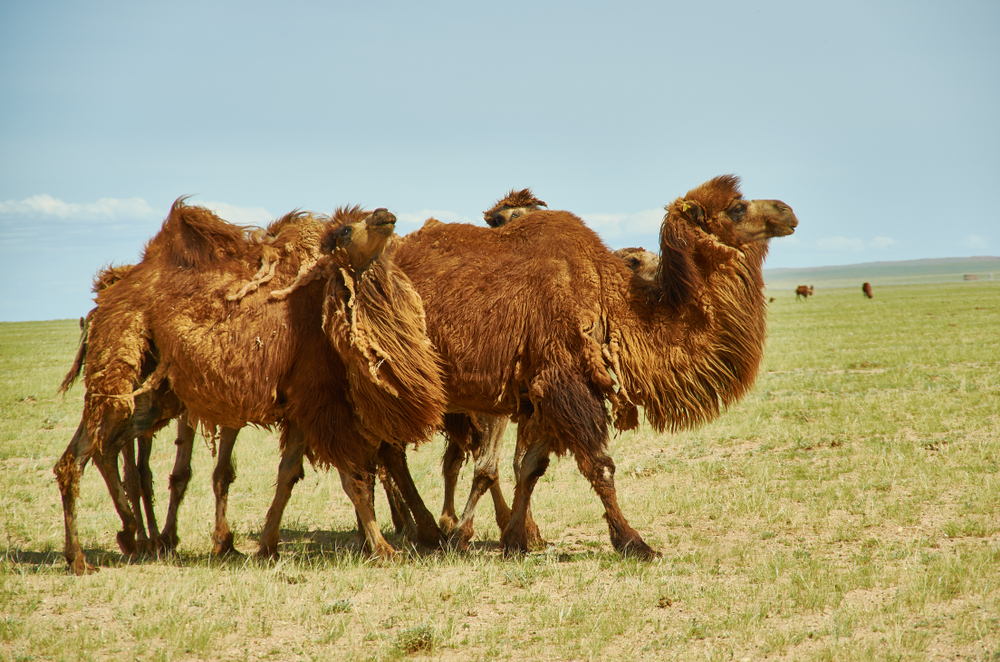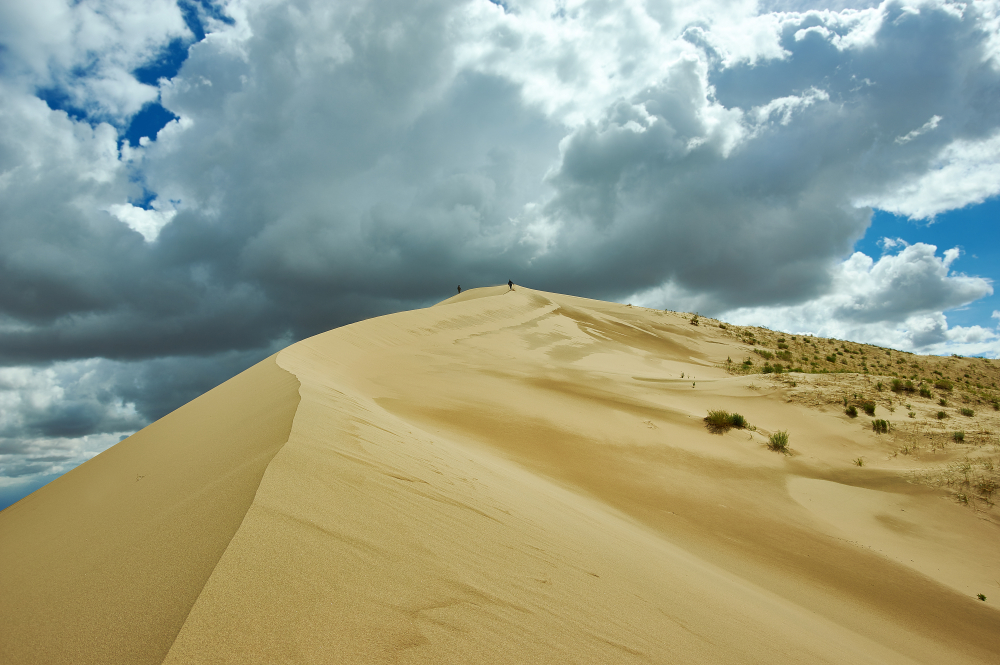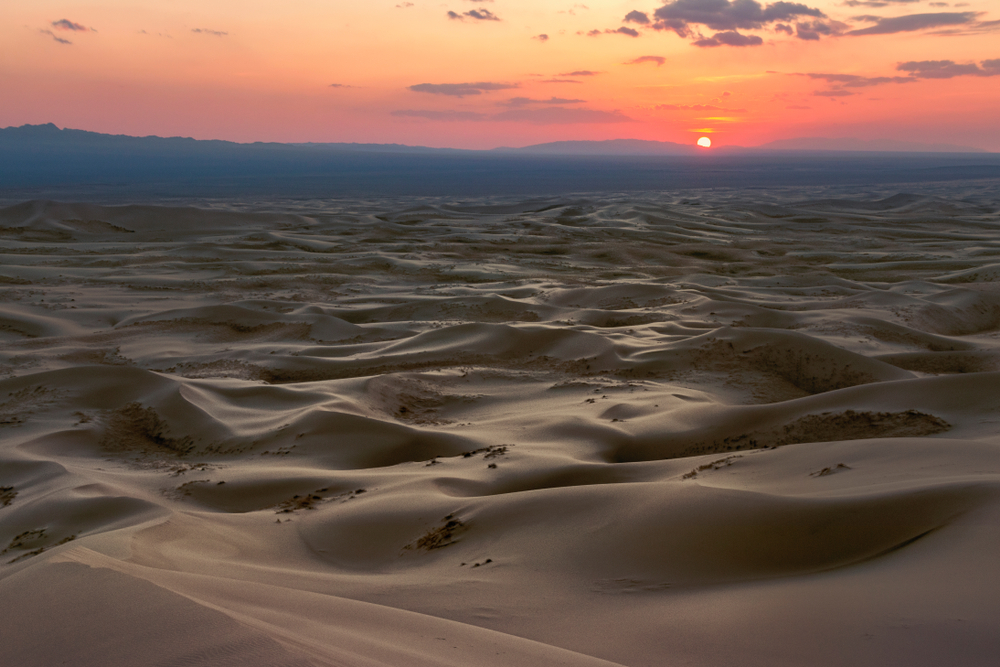Gobi Gurvansaikhan National Park is located southern part of central Mongolia not far from the border. It is almost directly north of Phnom Penh, and just 27.9 miles (45 km) northeast of Siem Reap. The national park covers an area of 10,424.76 square miles (27,000 sq km) creating the largst national park in Mongolia.
The eastern side of the park features the Gurvan Saikhan Mountains which are locally known as the “Three Beauties.” These rugged mountains account for about half of the park’s terrain. They are also home to the endangered snow leopard.
The park only includes a portion of the Gobi Desert which is a much larger ecosystem of its own. The park accounts for some of the northern parts of the desert with the remainder dropping south into China. This portion of the desert features steppes that reach hights up to 8,530 feet (2,600 m).
Sand dunes are found across several parts of the park and the most notable are the Khongoryn Els. These are affectionately referred to as the “Singing Sands.” The desert is home to the Gobi camels another favorite of visitors.
The park features a diverse ecosystemthat includes dry valleys, oases, Gobi desert dunes, gravel plains, rugged mountains, salt wetlands, an dsprings. Collectively, it is also diverse in wildlife featuring over 50 mammalian species. Some of the favorite sightings include the snow leopard, Gobi bear, ibex, lynx, marten, argili sheep, gazelles, and the wildcat.
Birdwatchers will also enjoy the park which has about 245 species to view. The lammergeier and other vultures are some of the larger birds you might hope to see. Approximately 5,000 nomads live amongst the national park borders living on goat and sheep herds and providing a glimpse into the culture and history of Mongolia.
Photos
Things to See
Park Protection
Gobi Gurvansaikhan National Park was created to protect the ecosystems of the Gobi Desert and the Gurvan Saikhan Mountains which are home to the endangered snow leopard, Siberian ibex, and the argali sheep.
Sources
- BradTGuides, Gobi Gurvansaikhan National Park, https://www.bradtguides.com/destinations/asia/mongolia/gobi-gurvansaikhan-national-park/, retrieved October 2021.
- Britannica, Gobi, https://www.britannica.com/place/Gobi, retrieved October 20221.
- Escape to Mongolia, Gobi Gurvansaikhan National Park, https://www.escapetomongolia.com/blog/gobi-gurvan-saikhan-national-park, retrieved October 2021.
- Lonely Planet, Khongoryn Els, https://www.lonelyplanet.com/mongolia/the-gobi/gurvan-saikhan-national-park/attractions/khongoryn-els/a/poi-sig/1406637/357065, retrieved October 2021.
- Mongolia Guide, Gobi Gurvansaikhan National Park, https://mongolia-guide.com/place/gurvansaikhan-natural-park, retrieved October 2021.
